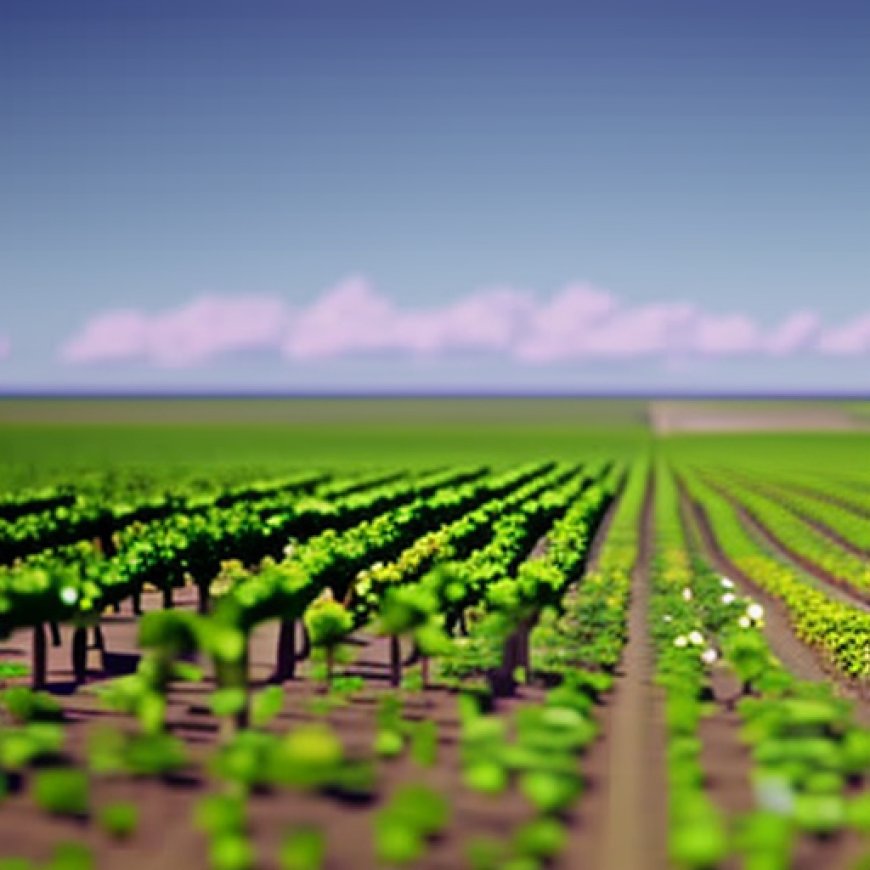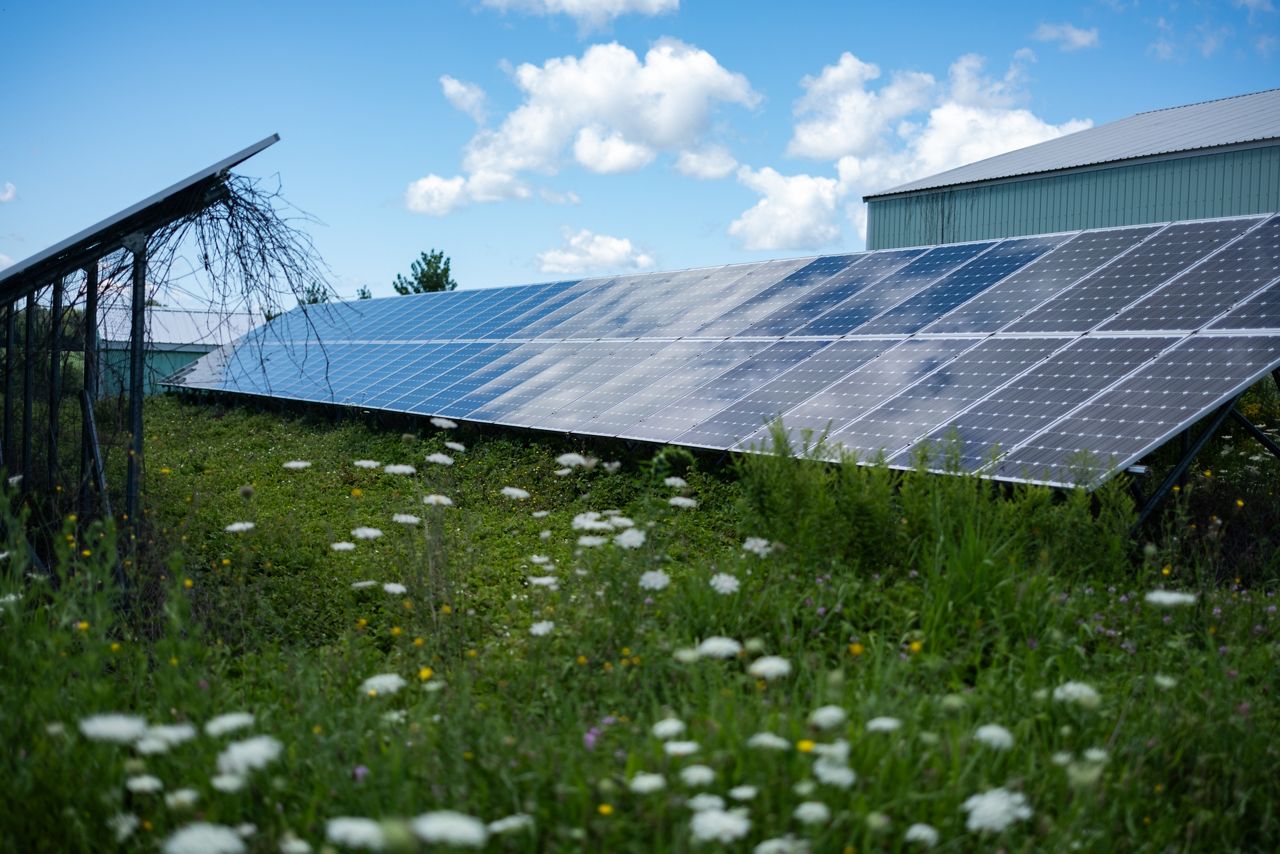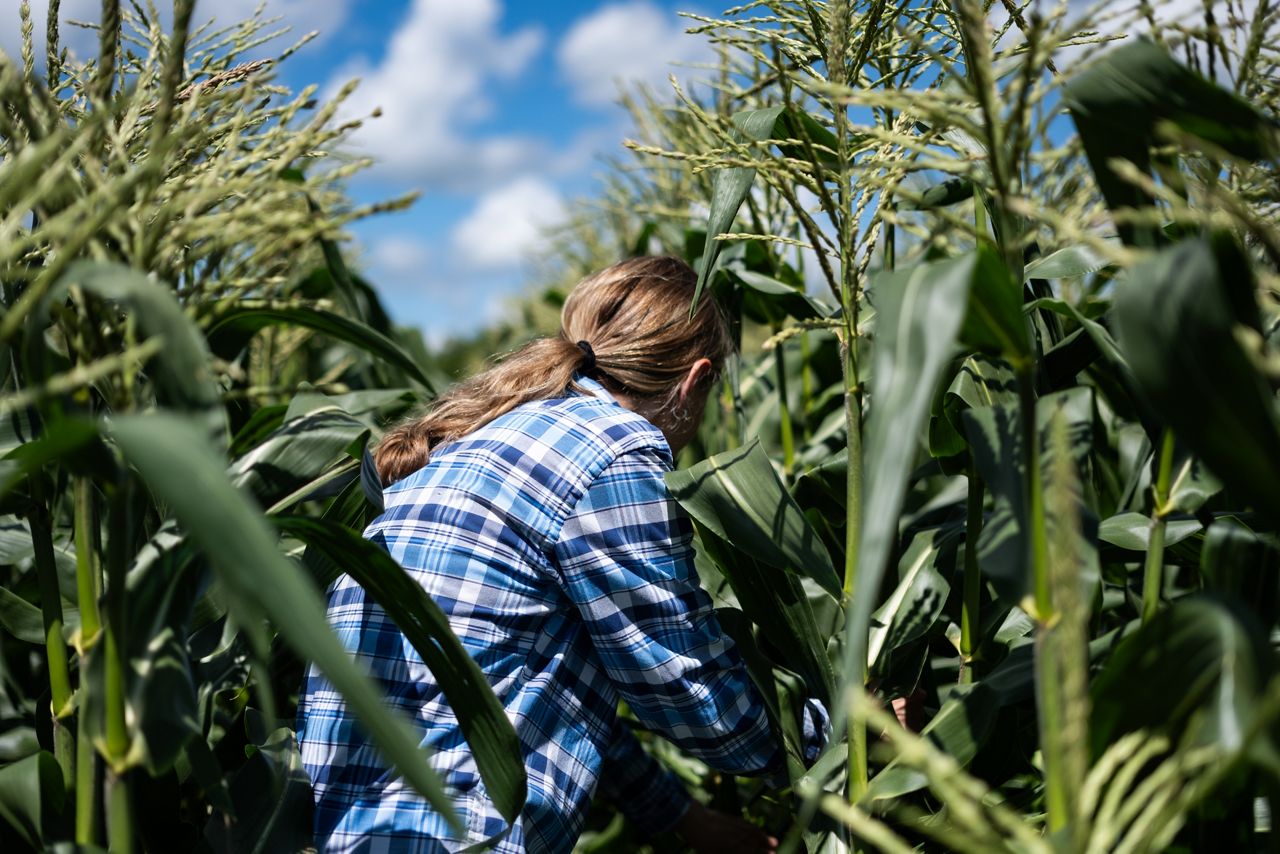State continues to lose farmland to residential, solar developments
State loses farmland to residential, solar developments Spectrum News


Farmland Conversion in New York Threatens Sustainable Development Goals
More and more farmland in New York is being purchased and rented for residential developments and solar power, decreasing the number of viable agricultural acres and increasing the price of land, federal and state data show.
Impact on Sustainable Development Goals
- Goal 2: Zero Hunger
- Goal 7: Affordable and Clean Energy
- Goal 11: Sustainable Cities and Communities
- Goal 15: Life on Land
Karen Reeves, whose family has farmed in Baldwinsville since the 19th century, said they are constantly approached by people who want to rent pieces of their 300-acre land for solar power. The Reeves family produces approximately 5 million pounds of produce per year.
“There is a big push to use renewable energy, which I’m totally in favor of, but it’s just not the best use for prime agricultural land,” Reeves said.

Solar panels that the Reeves Farm uses to power their farm placed on land that is not used for agriculture. (Emily Kenny/Spectrum News 1)
New York has lost 253,500 acres of agricultural land to development between 2001 and 2016, according to the American Farmland Trust, a nonprofit that works to protect farmland. The report found 78% of those acres were converted to low-density residential. AFT’s research shows that by 2040, 452,009 acres will be lost to urban and low-density conversion.
In addition to acres lost, AFT found it would be the equivalent of losing 2,500 farms, $288 million in farm output and 7,200 jobs.
The type of land being developed matters as, especially in New York state, the quality of soil can vary. Reeves said different soil types are better than others for agricultural use such as growing crops, and using land that is lower quality should be targeted for development.

Classifications made by the USDA on different soil types. (Courtesy of American Farmland Trust)
“That’s what should be used for solar, not prime agricultural land where you can grow vegetables and a wide variety of things,” she said.
According to research from Cornell University, on existing solar structures in New York, 44% of the projects were sited on crop, pasture or hay land, and 58% of solar projects were built on good quality soil or what has been defined as prime farmland.
Reeves does not fault farmers who chose to rent or sell their land to be used for solar or other purposes as they have faced financial challenges in the past few years.
“Farms are being pinched. We’ve had rising input costs, labor costs, we’ve seen record inflation,” Reeves said. “We’ve had pressure from imports. A lot of our customers can buy things cheaper from Mexico or Canada.”

Karen Reeves checks the status of her sweet corn. (Emily Kenny/Spectrum News 1)
“I believe it’s anywhere from $1,000 to $1,500 an acre per year, and most of these places are going to want you to sign a 30-year lease,” she said.
Sen. Michelle Hinchey, D-Saugerties, chair of the Committee of Agriculture, said an energy crisis cannot be exchanged for a food crisis.
“That is the vital element at risk of being lost when our agricultural lands are increasingly subject to aggressive development pressure,” Hinchey said.
By planning, siting and scaling renewable energy correctly, it’s possible to achieve a net-zero future, while still protecting the food system and farmland, Hinchey said.
“Failing to do so will make New York even more vulnerable to the whims of the climate crisis, and through legislation I sponsor, we can take a smarter approach to understand the all-encompassing implications of solar development for the future of our state and planet,” she said.
Hinchey has proposed a bill that would require the Office of Renewable Energy
SDGs, Targets, and Indicators
1. Which SDGs are addressed or connected to the issues highlighted in the article?
- SDG 2: Zero Hunger – The article discusses the conversion of agricultural land for non-agricultural purposes, which can impact food production and food security.
- SDG 7: Affordable and Clean Energy – The article mentions the push for renewable energy, specifically solar power, and its impact on agricultural land.
- SDG 11: Sustainable Cities and Communities – The article highlights the loss of agricultural land to residential and low-density development.
- SDG 13: Climate Action – The article mentions the need to balance renewable energy development with protecting farmland and the implications of climate change.
- SDG 15: Life on Land – The article discusses the loss of agricultural land and its impact on farming communities and the environment.
2. What specific targets under those SDGs can be identified based on the article’s content?
- SDG 2.4: By 2030, ensure sustainable food production systems and implement resilient agricultural practices that increase productivity and production, that help maintain ecosystems, that strengthen capacity for adaptation to climate change, extreme weather, drought, flooding, and other disasters, and that progressively improve land and soil quality.
- SDG 7.2: By 2030, increase substantially the share of renewable energy in the global energy mix.
- SDG 11.3: By 2030, enhance inclusive and sustainable urbanization and capacity for participatory, integrated, and sustainable human settlement planning and management in all countries.
- SDG 13.2: Integrate climate change measures into national policies, strategies, and planning.
- SDG 15.3: By 2030, combat desertification, restore degraded land and soil, including land affected by desertification, drought, and floods, and strive to achieve a land degradation-neutral world.
3. Are there any indicators mentioned or implied in the article that can be used to measure progress towards the identified targets?
- Percentage of agricultural land converted to non-agricultural uses (indicator for SDG 2.4 and SDG 11.3)
- Percentage of renewable energy in the energy mix (indicator for SDG 7.2)
- Amount of land lost to urban and low-density conversion (indicator for SDG 11.3)
- Number of farms, farm output, and jobs lost due to land conversion (indicator for SDG 2.4)
- Amount of prime farmland used for solar projects (indicator for SDG 2.4)
- Percentage of land suitable for agriculture protected from non-agricultural development (indicator for SDG 11.3)
Table: SDGs, Targets, and Indicators
| SDGs | Targets | Indicators |
|---|---|---|
| SDG 2: Zero Hunger | 2.4: By 2030, ensure sustainable food production systems and implement resilient agricultural practices that increase productivity and production, that help maintain ecosystems, that strengthen capacity for adaptation to climate change, extreme weather, drought, flooding, and other disasters, and that progressively improve land and soil quality. | – Percentage of agricultural land converted to non-agricultural uses – Number of farms, farm output, and jobs lost due to land conversion |
| SDG 7: Affordable and Clean Energy | 7.2: By 2030, increase substantially the share of renewable energy in the global energy mix. | – Percentage of renewable energy in the energy mix – Amount of prime farmland used for solar projects |
| SDG 11: Sustainable Cities and Communities | 11.3: By 2030, enhance inclusive and sustainable urbanization and capacity for participatory, integrated, and sustainable human settlement planning and management in all countries. | – Amount of land lost to urban and low-density conversion – Percentage of land suitable for agriculture protected from non-agricultural development |
| SDG 13: Climate Action | 13.2: Integrate climate change measures into national policies, strategies, and planning. | – Percentage of agricultural land converted to non-agricultural uses |
| SDG 15: Life on Land | 15.3: By 2030, combat desertification, restore degraded land and soil, including land affected by desertification, drought, and floods, and strive to achieve a land degradation-neutral world. | – Percentage of agricultural land converted to non-agricultural uses – Number of farms, farm output, and jobs lost due to land conversion |
Behold! This splendid article springs forth from the wellspring of knowledge, shaped by a wondrous proprietary AI technology that delved into a vast ocean of data, illuminating the path towards the Sustainable Development Goals. Remember that all rights are reserved by SDG Investors LLC, empowering us to champion progress together.
Source: spectrumlocalnews.com

Join us, as fellow seekers of change, on a transformative journey at https://sdgtalks.ai/welcome, where you can become a member and actively contribute to shaping a brighter future.







